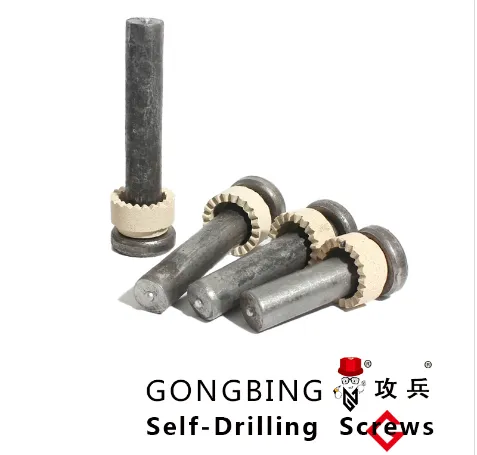Unlocking the Strength of Structural Bolts
In the intricate world of engineering and construction, where skyscrapers reach for the heavens and bridges span vast distances, Structural Bolts play a pivotal role in holding these feats of human ingenuity together. As the unsung heroes of structural integrity, these fasteners not only ensure the stability of buildings and infrastructure but also facilitate the precision assembly required for complex projects. Today, let's delve into the world of Structural Bolts and their siblings—Structural Fasteners, Aircraft Structural Fasteners, Masonry Wall Anchors, and structural threaded rod—to understand their significance, applications, and the science behind their design.

Introduction to Structural Bolts
Structural Bolts, also known as heavy hex bolts, are high-strength fasteners designed specifically for use in critical load-bearing applications. They differ from ordinary bolts in their stricter manufacturing standards, which often involve tighter tolerances, controlled materials, and heat treatment processes to achieve exceptional strength and durability. These bolts are typically used in conjunction with nuts and washers to create strong, reliable joints capable of withstanding significant tensile and shear forces.
The Role of Structural Fasteners
Broadly speaking, Structural Fasteners encompass a wide range of components, including bolts, nuts, washers, and specialized anchors, that are used to secure and assemble structures. These fasteners must adhere to rigorous standards set by regulatory bodies like ASTM (American Society for Testing and Materials) and DIN (Deutsches Institut für Normung) to ensure safety and reliability. From simple wood frame constructions to towering skyscrapers, structural fasteners are the lifeblood of modern engineering, enabling the seamless integration of various materials and components into cohesive, functional wholes.
The Special Case of Aircraft Structural Fasteners
When it comes to the realm of aviation, the stakes are even higher. Aircraft Structural Fasteners must not only withstand extreme environmental conditions, including high temperatures, humidity, and corrosive agents, but also be lightweight and resistant to fatigue failure. These fasteners undergo rigorous testing and certification processes to ensure they meet the stringent safety requirements of the aerospace industry. Common types of aircraft structural fasteners include high-tensile bolts, lockbolts, and specialized threaded inserts designed to provide optimal strength-to-weight ratios and minimize the risk of accidental loosening.
Masonry Wall Anchors: Securing the Foundation
In the construction of masonry walls, where stone, brick, or concrete blocks are used, Masonry Wall Anchors play a crucial role in securing these materials to the underlying structure. These anchors come in various forms, including expansion anchors, sleeve anchors, and epoxy anchors, each tailored to specific application requirements. Expansion anchors, for instance, utilize a tapered design that expands when tightened, creating a strong, reliable hold within the masonry material. Epoxy anchors, on the other hand, rely on an adhesive compound to bond the anchor to the substrate, providing exceptional holding power in both shear and tension.
structural threaded rod: The Backbone of Support Systems
structural threaded rod, also known as all-thread studs, are versatile fasteners used in a wide array of structural applications. They consist of a fully threaded shaft, making them ideal for use in tension-only or tension-compression scenarios where high load-bearing capacity is essential. structural threaded rod are commonly employed in bracing systems, tie-downs, and other applications where adjustable, rigid connections are required. Their ability to be cut to length and threaded with nuts at both ends provides designers with flexibility in creating custom solutions that meet specific project needs.
Innovations and Advancements
The field of structural fasteners is constantly evolving, driven by advancements in materials science, manufacturing technology, and the increasing demand for more sustainable and efficient construction practices. For instance, the development of high-strength, low-alloy (HSLA) steels has enabled the creation of even stronger structural bolts and threaded rods with reduced material consumption. Similarly, the adoption of titanium and aluminum alloys in aircraft structural fasteners has led to significant weight savings, improving fuel efficiency and reducing greenhouse gas emissions.
In conclusion, Structural Bolts and their associated Structural Fasteners, including Aircraft Structural Fasteners, Masonry Wall Anchors, and structural threaded rod, are the bedrock of modern engineering and construction. They enable the creation of towering structures, the safe flight of aircraft, and the resilience of our built environment. As technology continues to advance, so too will the design and performance of these essential components, ensuring that future generations can marvel at even greater feats of human ingenuity, securely held together by the invisible threads of structural fasteners. Whether it's a bridge spanning a river or a rocket launching into space, the role of structural bolts and their ilk in shaping our world cannot be overstated.
-
Weatherproof Plastic Expansion Anchors for OutdoorNovasJun.06,2025
-
Sustainability in the Supply Chain: Eco-Friendly TEK Screws ProductionNovasJun.06,2025
-
Load-Bearing Capacity of External Insulation FixingsNovasJun.06,2025
-
Double Head Bolts: Enhancing Efficiency in Industrial MachineryNovasJun.06,2025
-
Corrosion Resistance in Chipboard Screws: Coatings for Wholesale DurabilityNovasJun.06,2025
-
Butterfly Toggle Bolts : Enhancing Structural ResilienceNovasJun.06,2025
